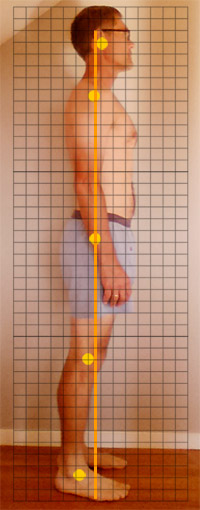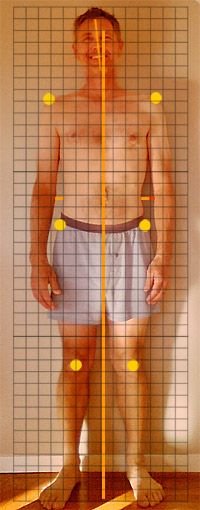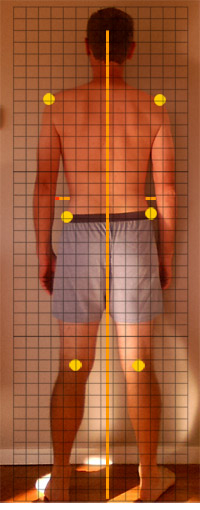A friend of ours recently mentioned that she’d been losing the feeling in her fingers over several months… to the point where she got relief only when working from bed. After being diagnosed with pinched nerves and not seeing improvement from medication, she finally underwent surgery. As I understand it (oversimplified I’m sure), her voice box was removed, the damaged vertebrae repaired, and her voice box put back into place.
What probably alarmed me most was that her doctor suggested that something as seemingly insignificant as poor posture may have contributed to the problem… since she works long hours at a computer.
What a wakeup call! I’ve always thought of posture as a nonverbal sign of self-confidence… and perhaps something that could contribute to/or help prevent osteoporosis when we get older, but I had no idea that it’s physical consequences could be so severe much earlier in life.
Now, I realize that poor posture is also often associated with neck and lower back pain, digestive, circulatory and breathing problems, a greater tendency to fall as we age — and even energy level and depression!
What does ideal posture look like?
Apparently, standing at military attention, with the chest thrust forward and shoulders back, is not ideal. But rather, the goal is to be more relaxed but tall.
From side view: ears, shoulders, hips, knees and ankles should be in vertical alignment. Your spine should curve into a gentle S, or even a J-shape) to help evenly distribute weight and withstand stress. Curves that are too dramatic, however, can be equally problematic: lordosis is the technical name for sway back, where the lower back rolls too far inward. Kyphosis is the exaggerated rounding of the upper back when the head is extended too far forward.
From front: head should be straight, shoulders and hips level, arms equal distant from the waist, knee caps facing forward and ankles straight. Weight distributed evenly on both feet.
From rear: spine should be straight rather than curved to right or left.
But it’s not just when we’re standing that posture is important. We should remain mindful of it when we’re walking, sitting… and even as you go from sitting to standing. Time spent driving, sitting at a desk, cradling a phone with your shoulder for extended periods, and texting or hunching over an electronic device can be especially problematic.
So how is your posture?
Posturezone is a free iPhone and iPad app that’s received good reviews and syncs with the device’s camera to analyze your posture and suggests steps for improvement. Unfortunately, Posturezone is not available for android and I wasn’t able to find anything comparable so I simply set the timer on my phone for a 10 second delay, jumped in front of the phone and took full-body selfies from front, side and rear. I then overlaid graph paper and created dots in the key areas to see how I line up:
(I took several snapshots of each angle to look for trends. I consistently appear to lurch forward a bit and cock my head to my left. So now, what do I do?)
5 Things we can do to improve posture?
In most cases, posture flaws can apparently be reversed. Here are a few suggested steps:
- Visualize good posture when sitting, walking and standing: imagine a string attached to the top of your head, pulling you taller. When standing, imagine your hips as a level bowl full of water, with butt tucked under and navel tucked in slightly, as if you’re zipping up a tight-fitting pair of pants.
- Avoid the habit of thinking that it’s OK to slouch, even for a short time.
- Manage your weight. Extra weight tends to pull the belly, thus curving the spine forward.
- Do gentle chest, back, shoulder and neck stretches and exercises to strengthen core muscles. Avoid overly strenuous exercises that can strain back muscle and cause back injury.
For example: whenever you think of it throughout the day, do 3 or 4 shoulder blade squeezes, holding for 5 seconds. Then reverse and pull elbow across your chest with the opposite hand and hold for 20 seconds. - Women should wear flat vs high heal shoes.
So, how is your posture? If you’ve used posture-improving apps, had a posture exam with a physical therapist or found tips for improving posture, please share them in the comment section below.
Sources:
- http://www.wsj.com/articles/how-bad-sitting-posture-at-work-leads-to-bad-standing-posture-all-the-time-1403564767
- http://www.health.harvard.edu/pain/4-ways-to-turn-good-posture-into-less-back-pain
- http://www.npr.org/sections/goatsandsoda/2015/06/08/412314701/lost-posture-why-indigenous-cultures-dont-have-back-pain
- https://www.utmb.edu/rehab/outpatient/posture.pdf


